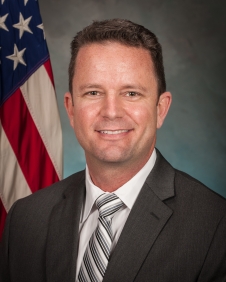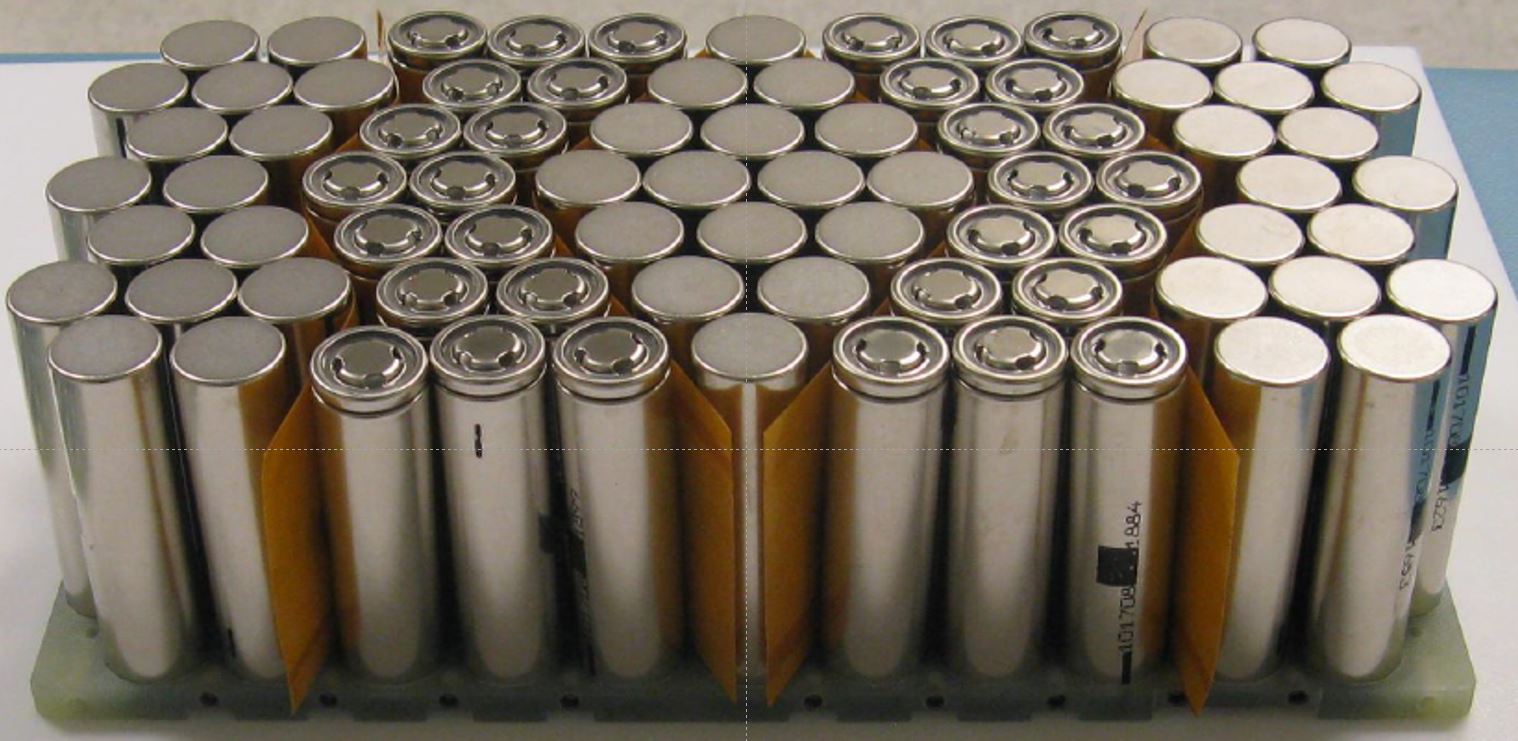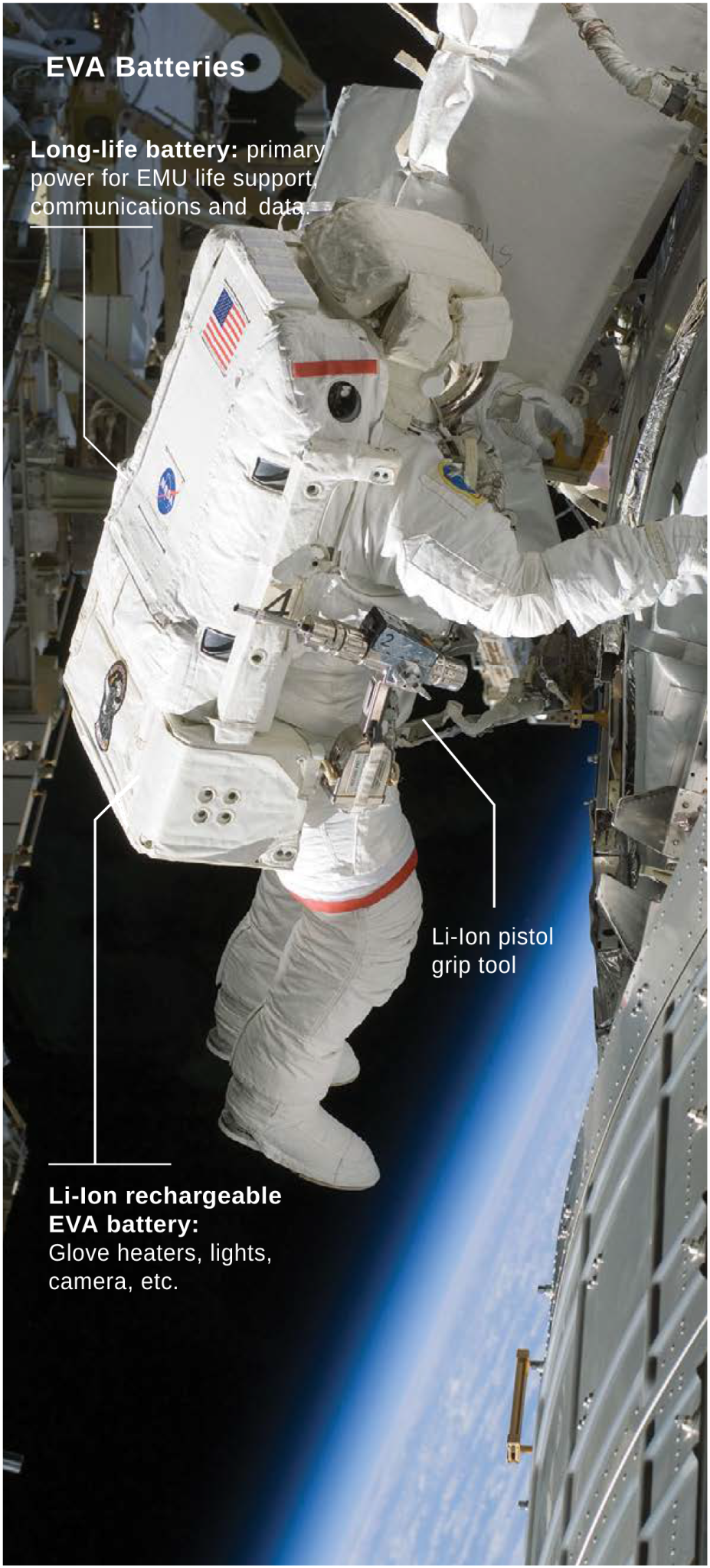This article is from the 2015 NESC Technical Update.
Li-Ion batteries perform well in packing a lot of energy into a small package. That is why NASA was one of the earliest adopters of the Li-Ion battery for use in space, where the advantages of smaller batteries with a long life expectancy are numerous, from fitting nicely into the confines of the International Space Station (ISS) or a space suit, to extending the length of a satellite’s mission or an astronaut’s walk in space.
Li-Ion Advantages and Drawbacks
“We were some of the first to adopt Li-Ion batteries in our vehicles, even before the aircraft and auto industries,” says Dr. Christopher Iannello, NASA Technical Fellow for Electrical Power. “They have a much better energy density, often more than two times greater than other battery chemistries, so their run time is much longer.” As a result, the Agency was an early adopter of Li-Ion batteries.
But that high energy density has a flip side. Dr. Iannello explains that the volatility of the constituents, coupled with the flammability and toxicity of typical Li-Ion electrolytes, means that at high temperatures the cell becomes thermally unstable where exothermic reactions release heat faster than heat can be dissipated from the cell. This condition, called thermal runaway, often results in the ignition of the venting electrolyte in the form of fire, smoke, and high temperatures in excess of 600º C. Of further concern is that during a single-cell thermal runaway, the high heat of the failing cell can propagate to the next neighboring cell, causing it to go into thermal runaway as well.
“We knew they had aggressive failure modes,” says Dr. Iannello, which he likened to a blow torch. “It’s a domino effect. If one cell goes, it heats its neighbor, and so on. Then it releases all of that energy, which on one of our vehicles would be catastrophic.” Hence, NASA’s intense scrutiny of Li-Ion batteries. “We’ve spent a lot of time and money watching the manufacturing to make sure the chances for cell-level defects are driven to a minimum. We do screening tests when they come in, and this reduces the likelihood that there will ever be a single cell with a problem, much less a propagation scenario.
In the past, the intent had traditionally been to drive the likelihood of a single-cell thermal runaway to as low as possible, but we gave little consideration to what the severity would be if it did occur. Basically, we worked the likelihood side of the risk equation hard, but mostly omitted the severity side, assuming that if a single cell were to go into thermal runaway, propagation was a forgone conclusion.”
But when Boeing experienced thermal runaway on its 787 Dreamliner aircraft, “we were concerned,” says Dr. Iannello, who worked with the NESC’s Electrical Power Technical Discipline Team to support Boeing’s investigations into the incidents. Ultimately, says Dr. Iannello, Boeing determined that manufacturing screens are not a perfect solution, and may never be perfect enough to ensure no unscreened defects.
Boeing focused on its screening tests and looked hard at its battery fleet, but not having solid proximate cause, it designed a strong box for its Li-Ion batteries that would contain the energy should a thermal runaway happen in the future. Dr. Iannello realized NASA could no longer depend on screens to protect against potential thermal runaway failures and gathered together key battery experts at the Agency to figure out how to minimize the risk of thermal runaway propagation within NASA spaceflight deployments.
Mitigating Risks Through Improved Packaging
Building a box to contain the energy is too heavy a solution for Li-Ion battery applications in space. And adding additional separation between the individual cells to avoid propagation could make the battery too large, eliminating the benefits of a compact design. But the TDT concluded that solutions would lie in how the cells were packaged, how vented battery effluents were managed, and how the cells were interconnected electrically. So, with the addition of the NASA Technical Fellow for Passive Thermal and electrochemical specialists, this is where the team concentrated its efforts. In particular, they focused on the Li-Ion batteries used on the ISS, the extravehicular mobility unit batteries in spacesuits, as well as the batteries used in hand tools.
“If a satellite has a thermal runaway, the result is catastrophic for the satellite, but there’s no human life involved. So we focused on human spaceflight, because that’s where it matters the most,” Dr. Iannello says.
NASA has never had an issue with its Li-Ion batteries, he says. “NASA has had an exceptional track record with no in-flight Li-Ion battery incidents, but Boeing’s experience made us realize we need to be prepared to manage this catastrophic hazard rather than trust it won’t occur based on our screens alone. When that one cell goes off, it’s like a blow torch; it pops,” he adds, “but if we can ensure that blow torch doesn’t impinge on its neighboring cell, we can prevent thermal runaway propagation.”
Development of Li-Ion Best Practices
Through the NESC assessment’s extensive analysis and tests, Dr. Iannello says that several best practices have been identified to help prevent thermal runaway from happening. “Managing the effluent and circulation of electrical energy within the battery is one,” he says. Should a Li-Ion battery cell experience a failure event, managing emissions from the cell and the transfer of the heat can prevent propagation.
“And when a cell gets hot, you don’t want it touching the cell next to it such that all its heat is transferred to the neighbor in a localized way. So, interstitial materials can be added,” adds Dr. Iannello. Those materials help absorb and distribute energy so that it is not localized to a single neighbor, which may help to prevent the thermal runaway.
In addition, fusible links help isolate failed cells ensuring circulating energy does not exacerbate the problem.
Additional options are being considered for individual battery types, including resizing of battery housing and the addition of containment bags that are tolerant to flames and other effluent released from a failed cell. Results from the NESC assessments are guiding the production, and in some cases, the redesign of future Li-Ion batteries used at NASA. And the NESC assessment team is sharing what it has learned with industry users. “We’re publishing our results at conferences as we go,” says Dr. Iannello. “In the end, we’re making batteries that don’t propagate failures, but still remain energy dense – batteries that retain the high energy density benefit of Li-Ion, but are safer.”





























